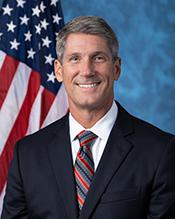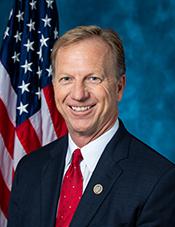H.R. 2932: Cutting Lead Exposure and Aviation Relief Skies Act
This bill, known as the Cutting Lead Exposure and Aviation Relief Skies Act (CLEAR Skies Act), aims to amend the Internal Revenue Code by establishing a tax credit related to the production of aviation gasoline that does not contain tetra-ethyl lead. Here’s a breakdown of its main components:
Aviation Gasoline Production Credit
The bill introduces a tax credit that is calculated based on the number of gallons of qualified aviation gasoline produced and sold by a taxpayer. The amount of credit is tied to a specific rate that decreases over the years:
- For gasoline sold in 2026: $1.25 per gallon
- For gasoline sold in 2027: $1.20 per gallon
- For gasoline sold in 2028: $1.15 per gallon
- For gasoline sold in 2029: $1.10 per gallon
- For gasoline sold in 2030: $1.05 per gallon
Definition of Qualified Aviation Gasoline
Qualified aviation gasoline is defined specifically as aviation gasoline that:
- Is free from tetra-ethyl lead
- Meets aviation fuel standards as outlined by regulations
- Is produced in the United States
Additionally, the transfer of this gasoline to an aircraft must occur in the United States for it to qualify for the tax credit.
Registration Requirements
To take advantage of the tax credit, producers must register with the Secretary of the Treasury and provide certification that confirms their product meets the criteria for qualified aviation gasoline. Without this registration and certification, the credit cannot be claimed.
Regulatory Framework
The bill mandates that the Secretary of Transportation and the Treasury Secretary will issue regulations within 180 days of the law's enactment to ensure the smooth implementation of this tax credit.
Termination Clause
This tax credit will be effective only for sales made until December 31, 2030, after which the bill will no longer apply.
Impact Study
The bill requires the Comptroller General of the United States to conduct a study focusing on the pricing of unleaded aviation gasoline. This study will analyze factors such as:
- The price differences between leaded and unleaded aviation gasoline
- Key drivers of these price differences, including production and transportation costs
- The effectiveness of the newly introduced tax credit in providing cost savings for consumers
- Recommendations for changes to the credit to maximize consumer benefits
- Current market share and future projections for unleaded aviation gasoline
A report detailing the findings of this study will be submitted to Congress within one year of the bill's enactment.
Key Changes to the Tax Code
The legislation includes amendments to the Internal Revenue Code to integrate the new aviation gasoline production credit as part of the general business credits, thus altering how certain fuel producers are taxed and classified.
Relevant Companies
- AVAV (AeroVironment, Inc.) - Due to their involvement in aviation and fuel technologies, they may benefit from the shift towards unleaded aviation gasoline.
- LMT (Lockheed Martin Corporation) - As a major player in the aviation sector, they may see implications in fuel costs and production methods.
This is an AI-generated summary of the bill text. There may be mistakes.
Sponsors
2 bill sponsors
Actions
2 actions
| Date | Action |
|---|---|
| Apr. 17, 2025 | Introduced in House |
| Apr. 17, 2025 | Referred to the House Committee on Ways and Means. |
Corporate Lobbying
0 companies lobbying
None found.
* Note that there can be significant delays in lobbying disclosures, and our data may be incomplete.















